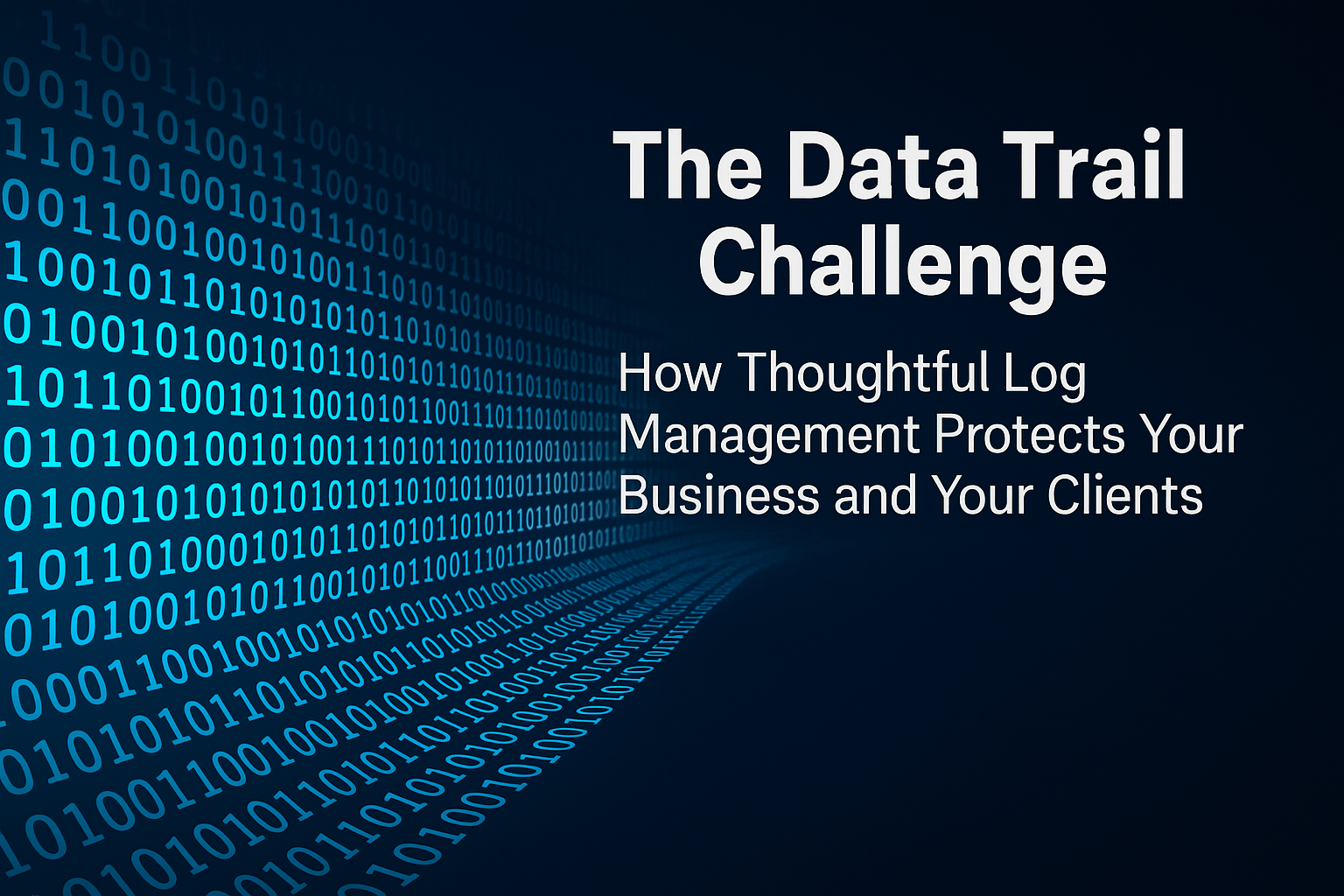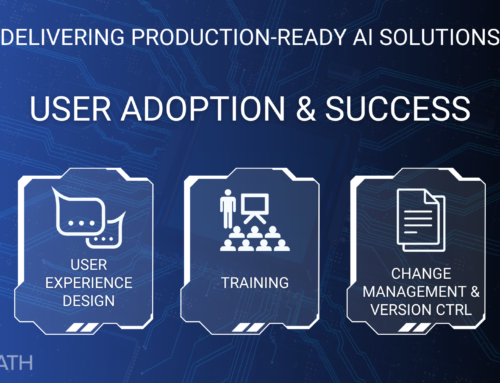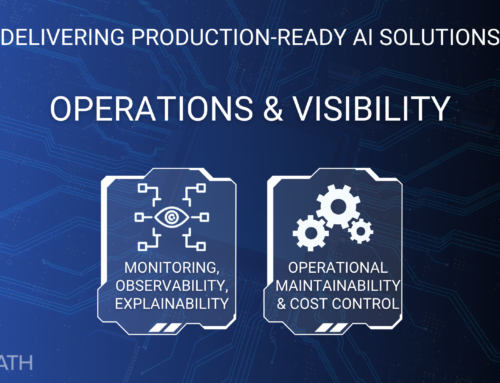When your AI systems process sensitive information, every interaction leaves a digital footprint. These logs are essential for maintaining reliable service, but they can also become a liability if not handled carefully. For business leaders implementing AI solutions, understanding log management isn't just a technical detail. It's a strategic imperative that affects client trust, regulatory compliance, and competitive advantage.
Why Logs Matter More Than You Think
Imagine your AI system as a sophisticated piece of medical equipment. When something goes wrong, you need detailed records to understand what happened, fix the problem, and prevent it from recurring. Without proper logs, diagnosing AI issues becomes like trying to repair a complex machine blindfolded.
Logs serve three critical business functions:
Operational reliability: When an AI system fails or performs poorly, logs provide the detective work needed to identify root causes. A healthcare AI that misinterprets a medical image needs immediate diagnosis, not just of the error, but of why it occurred.
Performance optimization: Logs reveal patterns in how users interact with AI systems, where bottlenecks occur, and which features create the most value. This intelligence drives product improvements and resource allocation decisions.
Compliance and accountability: In regulated industries, logs provide the audit trail that demonstrates responsible AI governance. They show that your systems are working as intended and that proper controls are in place.
The Privacy Paradox
Here's where it gets complicated: the more detailed your logs, the better your system performance and troubleshooting capabilities. But detailed logs also mean more exposure of sensitive information.
Consider a law firm using AI to analyze contracts. The logs might capture not just technical performance data, but fragments of confidential client communications, proprietary deal terms, or privileged legal strategies. Similarly, a healthcare AI processing patient records could inadvertently log protected health information alongside system diagnostics.
This creates a fundamental tension: you need comprehensive logs to run a professional-grade service, but comprehensive logs can become a data security liability.
A Smarter Approach: Tiered Log Architecture
The solution lies in treating different types of log information with appropriate levels of protection, similar to how a law firm manages different classes of documents.
Public Activity Logs: The Safe Foundation
These logs capture system behavior without exposing sensitive content. Think of them as a building's security camera footage that shows people entering and leaving, but doesn't record conversations.
What they track:
- When requests arrive and how long they take to process
- System performance metrics and error rates
- User activity patterns (without revealing content)
- Unique content fingerprints that verify integrity without exposure
These logs can be safely shared with external technical support, used for compliance reporting, and retained for long-term analysis.
Technical Debug Logs: The Middle Ground
When deeper investigation is needed, these logs provide more detail while still protecting the most sensitive information. Like medical charts that show symptoms and test results while redacting personal identifiers.
What they include:
- Content structure and length (but not the actual content)
- Processing steps and technical performance details
- Sanitized excerpts where sensitive terms are replaced with placeholders
- Enough context for troubleshooting without full exposure
These logs help internal technical teams solve complex problems while maintaining reasonable privacy protections.
Complete Records: Maximum Security
Full content logs are maintained only when absolutely necessary, with strict access controls and minimal retention periods. Like complete medical records that require special authorization to access.
These comprehensive logs are available only to senior technical staff under audit controls, and are automatically purged after short retention periods.
Industry-Specific Applications
Legal Technology
Law firms handling mergers and acquisitions might use AI to analyze thousands of contracts. Public logs would show processing times and system performance without revealing deal details. Debug logs might indicate "contract analysis request, 47 pages, financial terms detected" without exposing actual numbers. Complete logs would be available only to authorized technical staff and purged within days.
Healthcare AI
A radiology AI system processing medical images would log scan completion times and diagnostic confidence scores publicly. Debug logs might note "chest X-ray, possible pneumonia indicators detected" without storing the actual image or patient identifiers. Full diagnostic data would be tightly controlled and quickly purged.
Financial Services
AI systems processing loan applications or investment analysis would track processing volumes and decision timelines in public logs. Debug logs might indicate "mortgage application, high-risk indicators present" without revealing personal financial details. Complete records would be available only under strict controls.
The Business Impact
This tiered approach delivers three key business advantages:
Client confidence: Potential clients can see that your organization has thoughtfully addressed data privacy concerns before they become issues. This is particularly valuable when competing for business with highly regulated organizations.
Operational efficiency: Most technical support and system optimization can happen using logs that contain no sensitive information. This means faster problem resolution and lower support costs.
Regulatory compliance: The architecture naturally aligns with data minimization principles required by GDPR, HIPAA, and other regulatory frameworks. You collect only what you need and retain it only as long as necessary.
Making It Real
Implementing this approach requires specific technical and operational decisions:
Access controls that ensure the right people see the right information at the right time. Most troubleshooting happens with safe logs; escalation to sensitive logs requires justification and audit trails.
Retention policies that automatically purge sensitive information based on business need rather than technical convenience. Public logs might be retained for months, while complete records are deleted within days.
Export capabilities that allow you to provide comprehensive diagnostic information to clients or auditors without exposing other clients' information.
The Competitive Advantage
Organizations that implement thoughtful log management early gain a significant advantage in AI adoption. They can move faster because they've already solved the trust and compliance challenges that slow down their competitors.
When a potential client asks about data protection in your AI systems, having a well-designed log architecture demonstrates that your organization thinks systematically about these challenges. It shows that you're not just building AI systems; you're building trustworthy AI systems.
Looking Forward
As AI becomes more prevalent in business operations, the organizations that succeed will be those that balance innovation with responsibility. Thoughtful log management is one example of how technical decisions reflect business values.
The goal isn't to eliminate all risk. It's to take intelligent risks that enable your organization to capture the benefits of AI while protecting what matters most to your clients and your business.
For business leaders evaluating AI solutions, asking about log management is a way to understand how deeply a provider has thought about the operational realities of AI deployment. The quality of the answer reveals whether you're working with a vendor who builds features or a partner who builds solutions.





